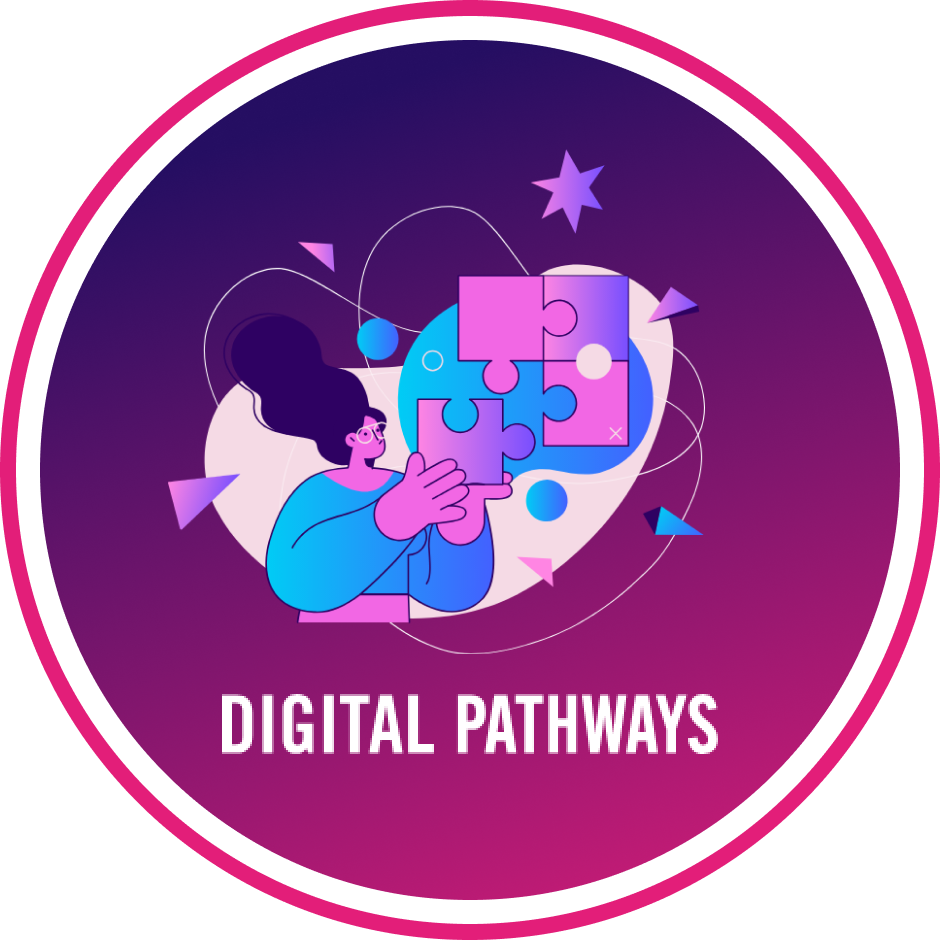
Labour Market Information
Follow Sarah’s reskilling journey and discover the practical benefits of Labour Market Information for all players in the Rapid Skilling System. Then explore real-world examples and best practices around Labour Market Information.

Step 1 of Sarah’s Journey
Too much information
“What kinds of jobs are out there?”
Sarah arrived in Canada with hopes of finding better opportunities for herself and her family. However, navigating the job market in her new country threw her into a whirlwind of confusion. With limited knowledge and conflicting information from the Internet, she feels lost and unsure of which skills are in demand, which industries are growing and what salaries she can expect to earn.
As Sarah struggles to set realistic expectations for her future career, little does she know that access to accurate labour market information would soon become her beacon of hope in the vast wilderness of job seeking.

What is Labour Market Information?
Detailed statistics of other description information that conveys trends, opportunities and challenges in an employment landscape. Can include: salaries, sectors, future employment forecasts, job duties, employment standards, qualifications, education and training, and career options.
The benefits of Labour Market Information
For Job Seekers:
Current data on job openings, in-demand skills, and salary trends allows job seekers to make informed decisions about their career paths, acquire relevant skills, and target industries or occupations with high demand.
For employers:
Employers can utilize real-time labor market information to identify skill gaps within their organization, and decide on competitive compensation packages to attract and retain talent.
For educators:
Educators can design curriculum and training programs to align with the current needs of employers, which ensures that graduates are equipped with in-demand skills that enhance their employability.
For policy makers:
Policymakers can make informed decisions about where to channel money and support into skills training programs, incentives for hiring in specific sectors, or job creation initiatives.

Putting Labour Market Information in action
WHO: Career development practitioners working in employment centers and in HR departments within companies.
ACTION: Use the most recent data to coach their clients or help their employees to upskill in jobs or areas that are in demand now or are forecasted to see demand in the future.
Where can I find relevant labour market information?
Government of Canada Job Bank:
The Government of Canada’s official job search website offering comprehensive labour market information, including job trends, salaries, and skills in demand.
Statistics Canada’s Labour Market Indicators:
Published monthly, this tool provides employment and unemployment data based on the Labour Force Survey.
Provincial and Territorial Government Websites:
Each province and territory typically has its own website with labour market information and resources tailored to the local job market. Examples include:
- Ontario’s labour market | ontario.ca
- Labour market information | Alberta.ca
- Research the Labour Market | WorkBC

Innovation in Action
Digital Pathways Platform
The platform uses advanced labor market data and ethical machine learning algorithms to identify an individual’s ‘starting point’ in the labor market and recommends best fit career path ‘destinations’ based upon information extracted from the labour market in real time. Powered by FutureFit AI, Digital Pathways builds a personalized roadmap of learning, resources, and work opportunities, all free of charge.
How it works
- An individual uploads their resume and other relevant career information about a current role and/or the career they are interested in transitioning into
- They receive a FutureFit AI-generated report that shows which skills they already have that are required for this new role and which skills they still need to learn
- Next, they get access to a wide range of free on-demand LinkedIn Learning courses tailored to their personal profile
- In addition, they are connected with real career coaches for one-on-one sessions, plus unlimited support through messaging and email
FutureFit AI by the numbers

Impressive results
The Digital Pathways Platform has seen some big wins:
- 3,000 users signed up in its first month
- job seekers using the platform landed relevant opportunities 60% faster than the national average
Ready to explore Digital Pathways?
Continue with the Rapid Skilling System Playbook
You just explored Element 01. Labour Market Information, where Sarah used data to get a clearer picture of what she needs to do to pivot careers. Next up: Element 02. Skills Assessments, where Sarah checks her current competencies against those needed in her new career.

element 02
Skills Assessments
Skills assessment and competency frameworks act like a roadmap, helping learners identify their strengths and weaknesses, guiding them on the best route to acquire the skills needed for the job market.